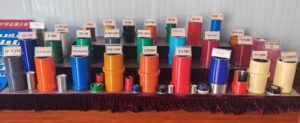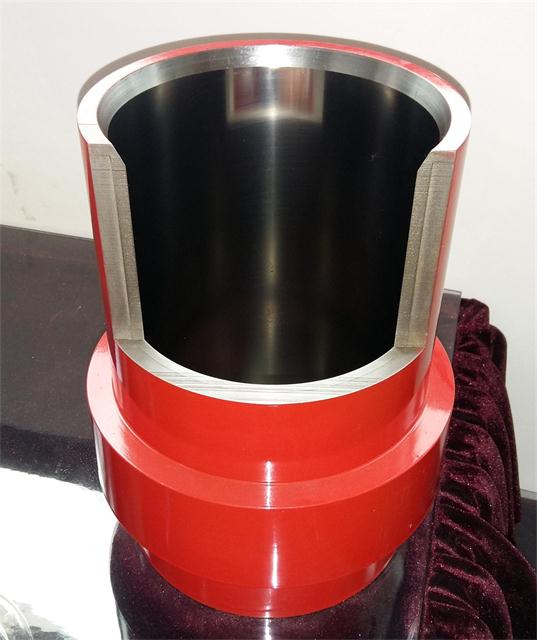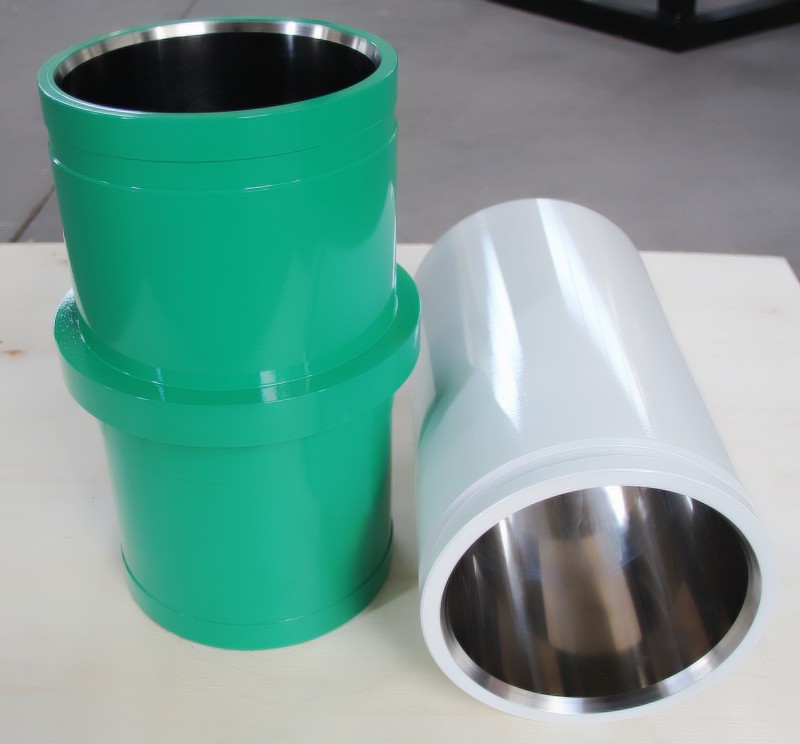Mud pump liners are a cornerstone of modern drilling operations, serving as the primary barrier against the immense forces and abrasive materials encountered in the oil and gas industry. While often perceived as simple expendable components, their performance dictates the efficiency, longevity, and overall reliability of the entire mud pump system. A comprehensive understanding of their function, material science, and maintenance protocols is crucial for drilling engineers and procurement specialists seeking to optimize operational uptime and control costs.

The Critical Role of Mud Pump Liners in 21st-Century Drilling Operations
Mud pumps are the heart of a drilling rig’s fluid circulation system, forcing specialized drilling fluid, or “mud,” down the drill pipe and back up the annulus. This process is essential for cooling the drill bit, lifting cuttings to the surface, and maintaining hydrostatic pressure in the wellbore. The mud pump liner, housed within the fluid end, is the cylindrical component that forms the chamber for the reciprocating piston. This chamber is where the magic happens, as it contains the high-pressure fluid and directs its flow.
The operational environment within this chamber is one of the most demanding in the entire drilling process. Mud pump liners must endure extreme conditions, including pressure differentials exceeding 5,000 psi and even reaching up to 7,500 psi (51.7MPa) in deep well applications. They are also subjected to cyclic loading at rates of 60 to 150 strokes per minute and must withstand the corrosive and abrasive effects of drilling fluids, which can contain up to 30% solid particles.
The importance of mud pump liners extends far beyond their function as a simple container. They act as a sacrificial layer, absorbing the brunt of abrasive wear and protecting the far more expensive fluid end module from erosion. More importantly, the dimensional precision and surface finish of the liner’s inner bore are critical for maintaining a tight seal with the reciprocating piston. A high-quality liner, honed to a smooth surface finish, minimizes fluid bypass and ensures the pump maintains its volumetric efficiency, which is the ratio of actual fluid output to theoretical output. When a liner’s surface degrades, it compromises this seal, leading to reduced pump pressure, decreased flow rate, and a cascading effect of premature wear on other components like the piston and valve assemblies, ultimately leading to costly downtime.
!(https://lcpumpliner.com/static/images/mud-pump-liners.jpg)
## Decoding the Types and Materials of Mud Pump Liners
The diversity of drilling environments—from conventional onshore fields to high-pressure, high-temperature (HPHT) offshore wells—has led to the development of a range of mud pump liners, each with a unique material composition and performance profile.
### Bi-metal Mud Pump Liners: The Industry Workhorse
Bi-metal liners are a common and cost-effective choice for many drilling operations. Their design is a masterful fusion of two different materials to achieve a balance of strength and wear resistance. The outer hull, or shell, is typically forged from high-strength carbon steel, such as AISI 1045, which provides the structural integrity necessary to withstand the high tensile and hoop stresses generated during operation. This robust outer shell supports an inner sleeve made from a proprietary high-chromium cast iron alloy, which is celebrated for its excellent resistance to abrasion and erosion.
Bi-metal liners typically provide a service life of approximately 800 to 1,000 hours under normal conditions. The inner sleeve’s hardness, a key indicator of its durability, ranges from HRC 58 to 69 after heat treatment, making it highly effective for applications where the drilling fluid’s sand content is between 0.05% and 0.15%. These liners are a reliable and economical choice for conventional onshore drilling but may require more frequent replacement in more demanding, high-abrasion environments.
### Ceramic Mud Pump Liners: The High-Performance Solution
For the most aggressive drilling conditions, ceramic liners offer a superior level of performance and longevity. These are primarily made from high-strength ceramics like zirconia or alumina. Zirconia liners, in particular, are favored in the offshore industry for their superior impact strength and thermal shock resistance.
The primary advantages of ceramic liners are their exceptional wear resistance and extended service life. Zirconia liners have a remarkably high hardness of 92-94 Rockwell and can deliver over 5,000 hours of service, significantly outlasting their bi-metal counterparts. This immense durability results in a significant reduction in piston wear, with some ceramic liners decreasing wear by up to 60% compared to steel variants. A critical feature is their mirror-like surface finish, typically measuring 4-8 RMS, which is paramount for maintaining an effective piston seal and reducing friction. These attributes make ceramic liners the ideal choice for HPHT wells, deep drilling, and environments with sand content greater than 0.15%.
### Other Specialized Mud Pump Liners
Beyond the two main categories, several other types of liners address specific needs:
Chrome-Plated Liners: These consist of a steel substrate coated with a thin layer of chromium. They offer moderate abrasion resistance with a hardness of HRC 58-62. Their service life is generally in the range of 1,000-1,500 hours, making them suitable for low-pressure applications and fluids that are not highly corrosive.
Single Metal Liners: Constructed from a single piece of high-quality hardened steel, these liners are a simple and robust option. After carburizing and high-frequency treatment, their hardness can reach HRC 58-62, making them suitable for mild corrosive mud.
Nickel-Based Alloy Liners: Representing a newer innovation, these liners feature a highly wear-resistant layer of nickel-based alloy powder applied to the inner wall using a vacuum sintering process. The addition of rare-earth elements and micron-level hard particles results in a sintered layer with a Rockwell hardness of HRC 60-64.
## Manufacturing Excellence and Quality Assurance
The reliability and durability of a mud pump liner are not solely dependent on the raw materials but are a direct reflection of the precision and control of the manufacturing process.
### The Centrifugal Casting Process: A Blend of Metallurgy and Precision
The production of high-quality bi-metal liners relies heavily on the centrifugal casting process. In this method, a precisely measured quantity of molten high-chrome iron is poured into a pre-heated outer steel hull. The hull is then spun at a high speed, often around 1,200 rpm, which forces the molten alloy to the inner surface, where it solidifies. This rotational force creates a dense, uniform inner sleeve and ensures a strong metallurgical bond between the two layers. The result is a dual-layer structure where the tough, heat-forged outer shell provides the necessary structural support to contain the immense pressure, while the centrifugally cast inner sleeve delivers a uniform and ultra-hard wear-resistant surface. This sophisticated process ensures that the inner layer is free of porosity and imperfections, which could otherwise lead to premature failure under the stress of a reciprocating piston. The liner’s ability to withstand pressures of up to 7,000 psi and the inner sleeve’s hardness of HRC 62+ are a direct result of this carefully controlled manufacturing technique.
### Heat Treatment and Precision Honing: The Final Touches on Durability
After casting, liners undergo a series of crucial heat treatment steps to optimize their mechanical properties. This multi-stage process typically involves annealing at 980∘C to remove internal stresses, followed by quenching to achieve the desired hardness, and finally tempering at temperatures around 200∘C to increase the material’s toughness. This precise thermal manipulation is what allows the inner sleeve to achieve the required hardness of HRC 58-69 while maintaining sufficient resistance to cracking.
The final, and equally critical, step is the precision honing of the inner bore. This process shapes the inner diameter to tight tolerances and, most importantly, creates the desired surface finish. The surface roughness is measured in RMS (Root Mean Square), with bi-metal liners typically having a finish of 16-20 RMS and high-performance ceramic liners achieving a mirror-like finish of 4-8 RMS. The quality of this surface finish has a profound impact on the entire system. A fine, smooth surface reduces friction, which in turn lowers heat generation and decreases wear on both the liner and the piston. A rough surface, in contrast, can create microscopic imperfections that lead to fluid bypass and premature scoring, accelerating the wear rate of both components and ultimately compromising the pump’s performance. The geometric precision of the inner diameter, achieved through processes like diamond grinding for ceramic liners, ensures optimal flow dynamics and maximizes the service life of the entire system.
## Adhering to API 7K Standards and Certifications
In the oil and gas industry, adherence to standards is not just a mark of quality; it is a fundamental requirement for safety and operational integrity. The American Petroleum Institute (API) provides a critical framework for this through its standard, API 7K, which governs the design, material, and testing of drilling and well servicing equipment. For mud pump liners, this standard is non-negotiable, ensuring dimensional compatibility, pressure integrity, and operational safety.
API 7K governs key parameters such as bore tolerances, which must be maintained within ±0.01″ for certified liners, ensuring a proper fit and optimal flow dynamics. The standard also mandates hydrostatic testing at 1.5 times the rated pressure for 3 minutes without leakage, a crucial test for ensuring pressure boundary integrity under extreme conditions. While API 7K establishes a baseline of quality and safety, it is not the ceiling. Some manufacturers exceed this standard, with tighter bore tolerances that can add a 5-10% bonus to the service life of pistons and liners. This highlights that API 7K is the floor of acceptable quality, and for a procurement professional, choosing a manufacturer that surpasses these minimums is a strategic decision that can yield a tangible return on investment.
## Extending Liner Lifespan: Maintenance and Cost-Effective Practices
A mud pump liner’s performance and longevity are as much a function of its quality as they are of the maintenance practices employed in the field. Understanding and addressing common failure modes is key to maximizing service life and minimizing downtime.
### Identifying Common Failure Modes and Their Root Causes
Abrasive particles in drilling fluid are the primary culprit behind mud pump liner failure. Over time, these particles can create grooves and deep scratches on the liner’s inner surface, a phenomenon known as scoring. This scoring increases friction, generates excess heat, and compromises the seal with the piston, leading to decreased pump efficiency. In drilling environments with acidic or high hydrogen sulfide (
H2S) content, the liner can also suffer from chemical corrosion, particularly in chrome-plated or single-metal variants. Furthermore, cyclic loading and improper installation can lead to more catastrophic failures, such as cracking or de-cylindering. These failures are not random events; they are predictable outcomes of neglect or a mismatch between the liner material and the operating conditions. By understanding these causal chains, operators can implement specific preventative measures to drastically extend component service life.
### A Comprehensive Maintenance Schedule for Mud Pump Liners
A structured, data-driven maintenance schedule is the most effective way to prevent premature liner failure.
Daily Checks: Routinely monitor pump performance metrics such as pressure and flow rate for any deviations. Listen for unusual noises or vibrations, and check for visible leaks around the fluid end. Ensure that the liner’s cooling system is operating properly and that the water in the spray pump tank is sufficient.
Weekly Maintenance: Perform a visual inspection of the liners and pistons for signs of wear, such as scoring or discoloration.
Monthly Tasks: Conduct a thorough inspection of all pump components. Measure and record the liner’s internal diameter at three points; replacement is necessary if the diameter exceeds OEM tolerances. Change the oil in the power end and crosshead sedimentation tank and analyze oil samples for signs of wear or contamination. This practice is highly effective, as oil analysis can predict up to 85% of potential pump failures by tracking particle counts of iron, chromium, and copper.
Quarterly and Annual Procedures: A complete fluid end overhaul is recommended quarterly to inspect and replace components showing significant wear, even if they have not yet reached the end of their service life. A comprehensive inspection of the entire pump should be conducted annually.
## The Economics of Mud Pump Liners: Total Cost of Ownership (TCO) Analysis
When procuring mud pump liners, focusing solely on the initial purchase price is a short-sighted approach that often leads to higher long-term costs. The true economic value of a liner is best understood through a Total Cost of Ownership (TCO) analysis, which factors in not only the purchase price but also expected service life, the cost of labor for replacement, and the costly impact of downtime.
Consider the dramatic difference in service life between a bi-metal liner (~800 hours) and a ceramic liner (>5,000 hours). While the ceramic option may have a higher upfront cost, its extended lifespan means that far fewer replacements are needed over a given period of time. This reduces the frequency of maintenance events, significantly cutting labor costs and, most critically, minimizing the lost revenue associated with pump downtime. The decision to purchase a higher-priced, longer-life liner is a strategic investment that pays dividends by reducing operational interruptions and increasing overall efficiency. The true value proposition is measured in cost-per-pumping-hour, which makes a more expensive, durable component the more economical choice in the long run.
## The Future of Mud Pump Liners: Trends and Innovations
The mud pump liner industry is constantly evolving, driven by advancements in material science and a global focus on sustainability and efficiency. New manufacturing techniques are pushing the boundaries of what is possible. For instance, additive manufacturing, or 3D printing, is being used to create complex geometries with tighter tolerances, allowing for custom-designed liners that can achieve a ±0.05mm tolerance. This technology is streamlining the production of complex components and reducing manufacturing time.
The industry is also responding to growing sustainability mandates. The development of biodegradable hydraulic seals and recycled metal composites is helping to reduce the overall carbon footprint of drilling operations. This signals a shift in market priorities, where the future of mud pump liners is not just about extending service life but also about optimizing for efficiency and environmental responsibility.
Globally, the market is characterized by regional specialization. North America is dominated by major players like FET and NOV, who focus on advanced shale gas technology and smart liners. In contrast, the Asia-Pacific market, led by manufacturers such as Shandong Yacheng and LONGWELL, is growing rapidly by offering cost-competitive ceramic liners. For buyers, assessing a supplier’s reputation, quality management systems (e.g., ISO 9001), and after-sales support is as important as the product’s technical specifications.
## Conclusion: Choosing the Right Mud Pump Liners for Your Operation
The choice of mud pump liners is a critical and strategic decision that directly impacts operational efficiency and profitability. It is a decision that must be guided not by a simple price comparison but by a nuanced understanding of a product’s performance profile, its manufacturing quality, and its long-term economic impact.
A definitive analysis shows that the ideal mud pump liner depends entirely on the specific drilling environment, including the abrasiveness of the fluid, the operating pressure, and the temperature. While bi-metal liners remain a reliable and cost-effective choice for conventional operations, ceramic liners represent a superior investment for demanding HPHT or offshore applications due to their immense durability and extended service life. The key to successful procurement is to evaluate each option based on its Total Cost of Ownership, prioritizing products that meet or exceed API 7K standards and are supported by a rigorous, data-driven maintenance schedule. This proactive approach ensures optimal pump performance, minimizes unscheduled downtime, and ultimately maximizes the return on a company’s investment in its drilling assets.
To find the perfect mud pump liners for your specific drilling needs, contact a trusted manufacturer today to discuss your requirements and get a personalized quote.


